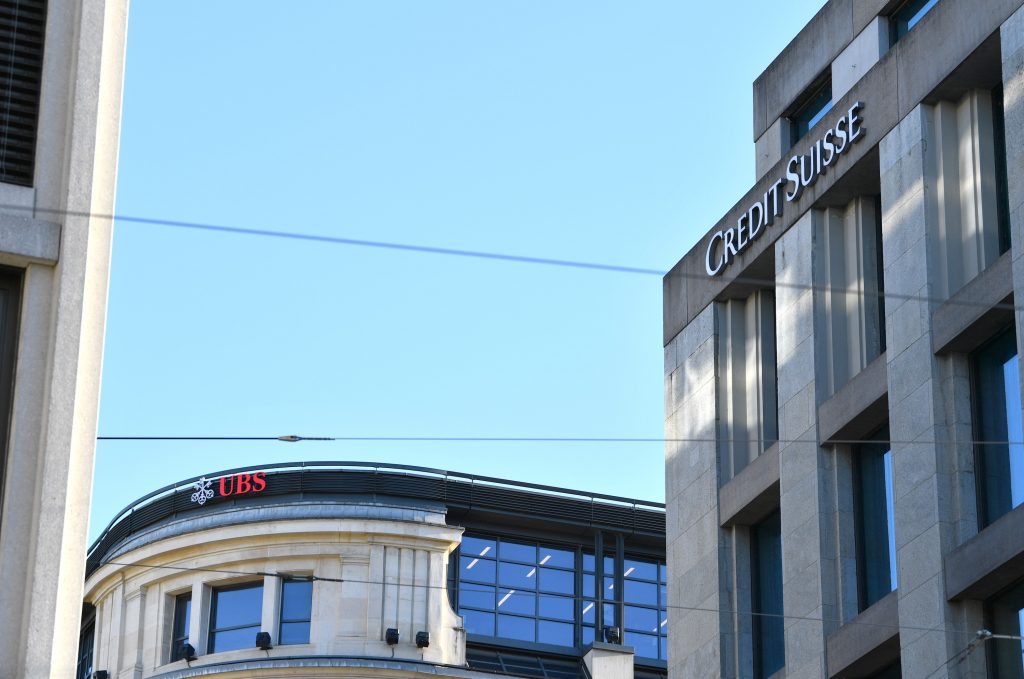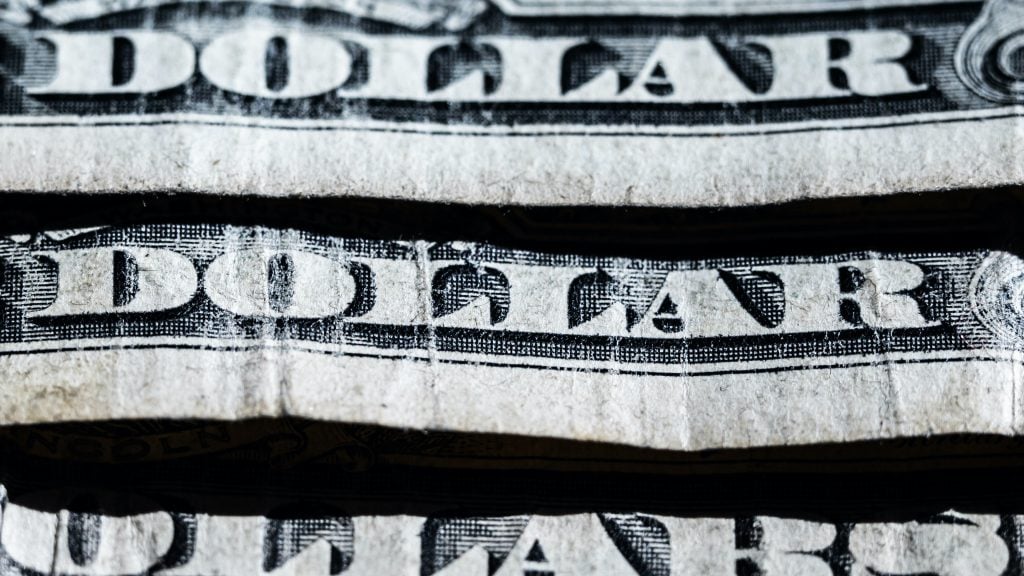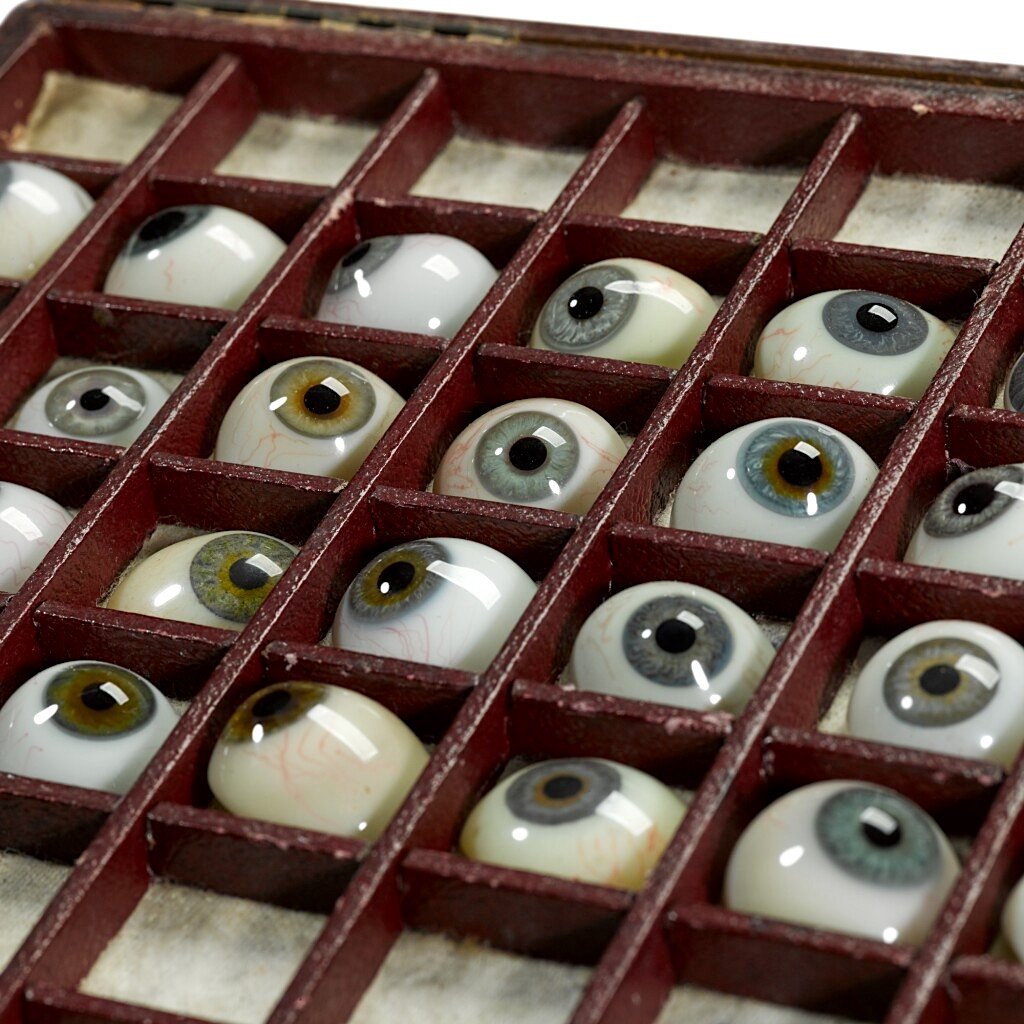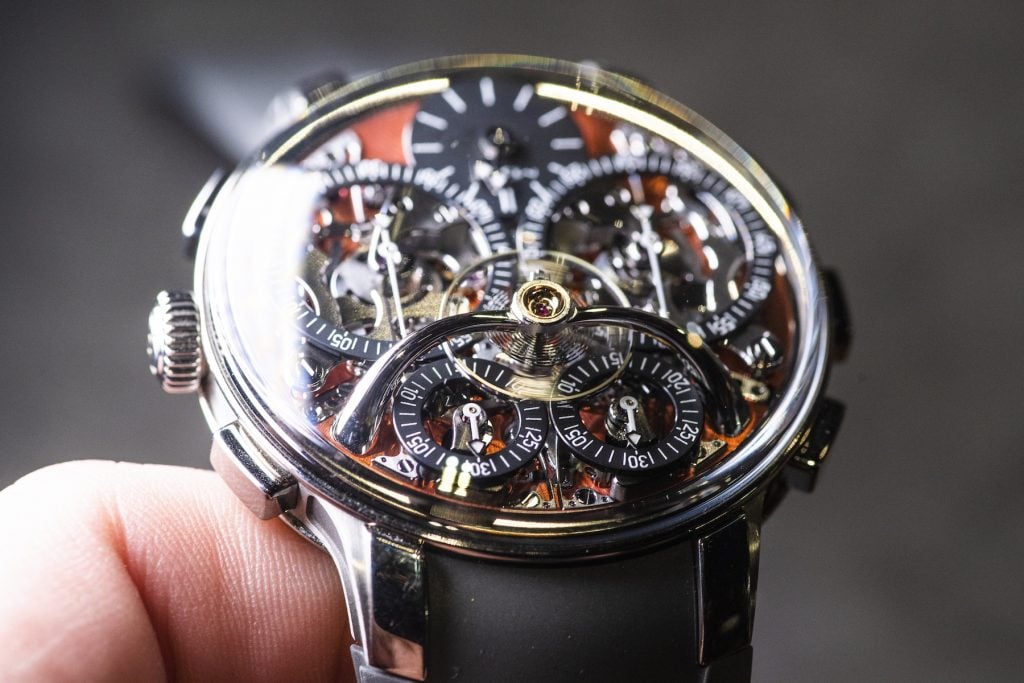Every week, Artnet News brings you The Gray Market. The column decodes important stories from the previous week—and offers unparalleled insight into the inner workings of the art industry in the process.
This week, returning to the accident site…
HERE WE GO AGAIN…
I normally try not to write about the same general subject two weeks in a row, but the state of the banking industry right now remains so volatile and so critical to all forms of commerce that it feels irresponsible to focus anywhere else. So, seven days after sifting through the ashes of Silicon Valley Bank in search of meaning, here I am again trying to figure out how the latest smoke and fire among global banks might impact the art trade.
The most scorching news broke over the weekend, when the Swiss government forced everybody’s favorite Art Basel sponsor, UBS, to acquire its long-struggling rival, Credit Suisse, for roughly $3.2 billion. The merger was more complex than that one-liner suggests, as Bloomberg’s Matt Levine unwound, and Credit Suisse’s troubles have little direct linkage to the demise of Silicon Valley Bank and other recently failed regional banks in the U.S. Still, a major international bank succumbing for any reason at this point is cause for concern worldwide.
Also teetering as of publication time was First Republic, another midsized U.S. bank, whose shareholders and depositors continued fleeing even after a consortium of larger American banks tried to restore confidence by pumping in $30 billion worth of new deposits. First Republic customers have now withdrawn about $70 billion since its troubles began, while the bank’s stock has plummeted by 80 percent in March, per the Wall Street Journal.
Those cases might just be the kindling, too. A recent academic study featured in Monday’s Dealbook newsletter concluded that up to 190 other lenders could be flammable. Some of the names people are watching closely include California-based regional bank PacWest, online brokerage Charles Schwab, and European lenders such as Deutsche Bank and Société Générale (though shares in all four were up at the start of trading Tuesday).

The Geneva offices of longtime rivals Credit Suisse and UBS on March 20, 2023, one day after news broke that the former would be taken over by the latter per the orders of the Swiss government. (Photo by Lian Yi/Xinhua via Getty Images)
Several banks in this cohort also appear to be locked into a high-stakes game of chicken with the larger, healthier banks interested in acquiring them at a discount for corporate profits and systemic stability. Andrew Ross Sorkin described the overall tension by noting that, in First Republic’s case, “management still thinks it is worth more than the market does, while buyers believe they could get it for even less.” This means both sides feel justified in waiting for a better deal at the considerable downside risk of crashing everyone into the incinerator together.
Looming over all of this possible mayhem is the next move by the U.S. Federal Reserve. The Fed will decide shortly after this column’s publication on Wednesday whether to continue its year-long campaign of interest rate hikes. In a vacuum, the latest inflation data seems to call for another increase, but upping rates again would only intensify the stress on several banks destabilized by the rapid shift from a low-interest-rate environment to a high-interest-rate environment since early 2022. (Silicon Valley Bank was a textbook example, as I covered last week.) The most broadly held opinion seems to be that the Fed will ultimately raise its policy rate another 0.25 percent. That’s less than at other junctures in the past year but could nonetheless prove to be more than some beleaguered banks can bear.
There is way too much still undetermined for me to feel comfortable spinning out some kind of unified theory about what it will all mean for the art market. What I’ll do instead is to zero in on one particular color in the Rubik’s Cube: how the turmoil is likely to affect lending and borrowing money in the art trade. Even with this narrowed focus, it’s still not easy to snap all the rows into place.

Extreme close-up of U.S. dollar bills layered on top of one another. Photo: Silas Stein/dpa (Photo by Silas Stein/picture alliance via Getty Images)
SMALL BUSINESS CLAMPDOWN
Let’s suppose that a combination of government action and commercial cooperation manages to shepherd the banking system through this firestorm without any further casualties. Even in this best-case scenario, most economists and analysts seem to believe that credit markets will get tighter, meaning banks will become harder and more expensive to borrow from. That outcome might come from a renewed commitment to strengthening banking regulation in Washington, or because lenders will have been chastened by this year’s frightfest, or a combination of both. But regardless of the reasons, such an outcome will likely have meaningful downstream effects on the art trade.
The first of these effects concerns the type of borrowing we don’t tend to hear much about (outside of the pandemic-era Paycheck Protection Program, anyway): art businesses taking out typical small business loans from commercial banks. I have to admit that it’s unclear to me right now how much of this type of activity goes on in an average year among the tier of emerging-to-modestly-sized galleries, artists’ studios, and other trade entities that align with a widely held concept of a “small business” in 2023. I do have a few anecdotal examples of, say, dealers borrowing money to renovate an existing space or to upgrade to a new, larger one. What I don’t have is a high degree of confidence that these examples are as common as they would be in other business sectors, mostly because multiple structural traits say they shouldn’t be.
This is largely due to the volatile nature of the art trade as a cash-flow business. In plain terms, it’s relatively rare for anyone who owns a small gallery to be able to count on how much money they’ll make and when it will come in month to month. Most art buyers are notoriously slow to pay invoices no matter what the terms on the paperwork try to hold them to. Most dealers also see following up with late-paying clients as a delicate art—and for good reason. Alienate the wrong person, and they might not just cancel the sale outright; they might also go out of their way to slander you to their peers, too, compounding your problems.
On top of that, transparency and record-keeping standards beneath the upper levels of the commercial art market tend to leave plenty of room for improvement, to put it diplomatically. Many, if not most, galleries only have a handful of employees other than their founder(s). Relatively few even have a full-time bookkeeper, let alone a higher-level financial officer or a robust accounting strategy that involves, say, regular financial statements audited by an independent third-party firm.
While these operational upgrades had already become more and more prevalent at the lower end of other middle-market businesses by 2018, the law firm Blank Rome wrote in that year’s TEFAF Art Finance Report that they were “notably lacking among all but the top U.S. art galleries, according to commercial bankers who are active in this space.” I’ve found little evidence to suggest that much has changed in the five years since. In fact, a survey in the 2021 edition of DeLoitte’s Art and Finance Report found that 83 percent of responding art professionals felt the industry needed to modernize its business practices to reach its full potential, up from 80 percent in 2019 and 74 percent in 2017.
Combine all of the above with the relatively low revenue expectations of small-to-modestly-sized galleries, as well as the subjective value of, and niche market for, most of the assets (see: artworks) that would normally serve as loan collateral, and the average gallery is an almost uniquely unappealing candidate in the eyes of lending officers at most banks. Think about it from their perspective: How eager would you be to lend money to a business with unpredictable cash flow, record-keeping that is exceptionally weak by the standards of other industries, a bunch of inventory you’d be hard-pressed to sell if you had to seize it for nonpayment, and a pretty meager upside even if all goes well?

A cased set of prosthetic handblown-glass eyes, early 20th century. Courtesy of Sotheby’s London.
What’s more common at the highest levels of the trade are revolving lines of credit established by blue-chip and nearly-blue-chip dealers, often for the purposes of buying artworks as inventory. But these tools are basically inaccessible to everyone else, from what I can tell. For reference, commercial banks in the U.S. typically consider the Goldilocks Zone for business lending to be companies that generate between about $20 million and $100 million annually. So if you don’t have enough clout to negotiate for a favorably placed booth at Art Basel or Frieze, you’re probably not eligible for this kind of credit facility.
There is one potential caveat to everything I’ve just written, though. Felix Salmon of Axios noted last week that the U.S. is the only high-income country that still supports thousands of midsized regional banks instead of just three or four “too big to fail” banks. One justification for this quirk is that particular regional banks sometimes develop particular specialties in particular industries. Because these banks understand the nuances and exceptions of said industries in ways their competitors don’t, they also become uncommonly willing to lend to businesses within them when others wouldn’t.
I haven’t been able to confirm yet whether there is any particular bank uniquely attuned to the needs of the art world. But the upheaval in the banking sector last week shows the downside risk if there is. Silicon Valley Bank originally rose to prominence because it was one of the few banks willing to do business with early stage startups in the Bay Area, and its lending portfolio also contained an unusually large share of wineries. Signature Bank, which also failed last week, was “one of the two main financial institutions” that worked with Broadway productions, leaving City National Bank as the only game in town with a core competency in that particular niche, according to the Hollywood Reporter.
Salmon emphasized that, in general, lending markets aren’t at a critical point yet. “I will say that so far, commercial real estate aside, we aren’t really in any kind of a credit crisis. Banks’ loan books seem to be perfectly healthy,” he wrote to me on Monday. That could change if the banking sector takes another turn for the worse. Even if it doesn’t, though, a shaken, pricier, more selective commercial lending market likely means that galleries and other modestly sized art businesses will have an even harder time borrowing money than they already did before SVB, Credit Suisse, and others went down in flames.
THE OTHER SIDE OF THE COIN
Not surprisingly, the wealthiest players in the art game have more financing options in this wobbly banking moment than everyone else. Among those options are art-backed loans, which have attracted a growing amount of publicity over the course of the past five to 10 years. The dependably excellent Georgina Adam just wrote a handy short-form roundup of this subsector in the Art Newspaper last week, in fact. What I’ll do is build on that discussion, partly by contextualizing it within the broader tensions in the banking sector.
First, for the uninitiated, art-backed loans are an altogether different product than typical commercial loans. The underlying idea is that the owner of one or more high-value artworks hands over the artwork as collateral in exchange for cash, then retrieves the artwork from the lender once the loan is paid back with interest. In general, art-backed loans tend to top out at about 50 percent of the appraised value of the collateralized work(s).
They are also not a game for small-chips players. Athena Art Finance (which was acquired by Yieldstreet in 2019) and the Fine Art Group, two of the leaders within the specialty art-financing field, currently only write loans worth a minimum of $1 million. The same is true at Christie’s Art Finance and Sotheby’s Financial Services. The art-backed loans offered to top clients by major lenders like Bank of America rarely, if ever, go lower than seven figures, either.
In general, this branch of art financing seems poised to gain from the recent turbulence in the banking sector. At the most basic level, the harder and more expensive it becomes for owners of high-value art to borrow from banks through traditional means, the likelier they are to explore other options.
“Liquidity everywhere continues to tighten. All businesses are having more trouble obtaining cash-flow-based loans,” Rebecca Fine, managing director and head of art finance at Athena, said via email. “Demand for art-backed loans, or hard-asset loans, is definitely increasing, particularly because art valuations have shown resilience when other hard assets such as real estate have not.”
This uptrend predates the collapse of Silicon Valley Bank. Freya Stewart, CEO of art finance at the Fine Art Group, traces the roots of art-backed loans’ rise to the aftermath of the 2008 financial crisis. Before the disintegration of Lehman Brothers, the average institutional investor tended to rely on what she termed a single “prime broker” (aka banking and lending) relationship. After several banks and their customers were blown up by the banks’ own bad investments, however, investors started diversifying their banking relationships partly to diversify their credit risk in case something were to go awry at any given institution.
“It used to be that everyone thought it was completely mad to have more than one prime broker relationship, and now it would be extraordinary not to,” Stewart said.
The key for major collectors (including dealers with valuable art holdings), she added, is that their choice of financing doesn’t have to be one-sided. Art-backed loans from private lenders can complement more traditional loans from large banks, partly because the former is more insulated from turmoil in the finance sector than the latter. For example, it’s impossible for a borrower to get margin-called on an art-backed loan from a specialty firm because that loan has no connection to any other borrowing or trading activity.
(High net worth customers with a greater appetite for risk could also theoretically lever up their loans, borrowing from one lender at one interest rate so they can put the money to work somewhere else with a higher return. This tactic proved popular while the Fed kept benchmark interest rates at or near zero for so much of the past decade.)
It’s little wonder, then, that specialty art lenders have been expanding their services since the Fed started ratcheting up rates in early 2022. The Fine Art Group also began writing loans backed by luxury watches last year. Athena recently started offering payment-in-kind (PIK) loans, which provide ready cash to borrowers in exchange for collateralizing artwork they’ve committed to sell via an upcoming auction or private consignment.
Novel art financing options are emerging toward the lower end of the commercial hierarchy, too. For instance, there is Borro, which Adam writes “operates a little like a pawnbroker” by offering short-term financing against art and collectibles valued as low as $10,000. Christie’s Ventures, the auction house’s venture-capital arm, also recently acquired a non-controlling minority stake in Art Money, an eight-year-old fintech startup offering interest-free financing to buy art priced as low as $1,000 from more than 1,500 partner sellers.
Expect both the number and the creativity of art-related financing options to keep growing as interest rates stay aloft and pressure increases on midsized commercial lenders. There is a very real way in which the banking sector’s problems appear to be this niche subsector’s benefits—at least as long as those problems don’t tip over into a full-blown credit crisis. At that point, practically everyone stands to lose.
That’s all for this week. ‘Til next time, remember: it’s all connected.









